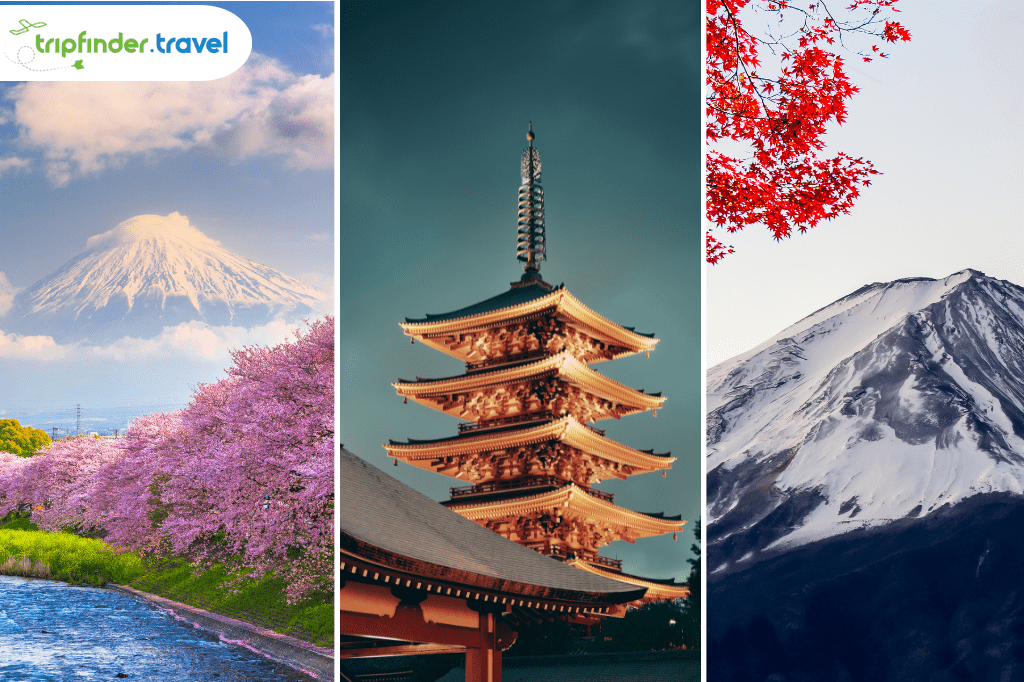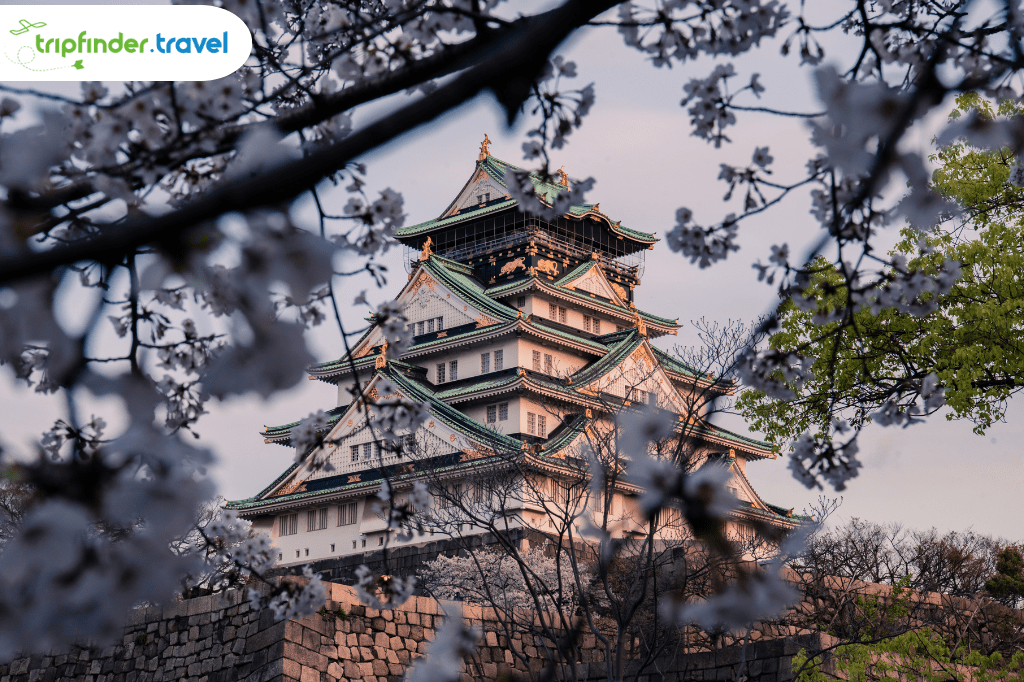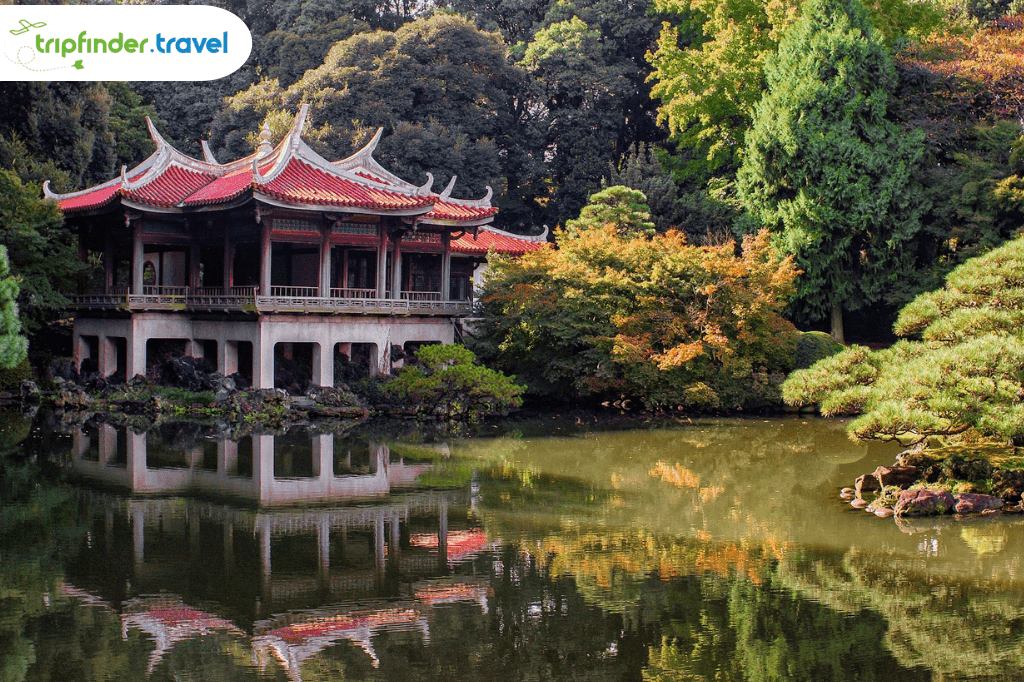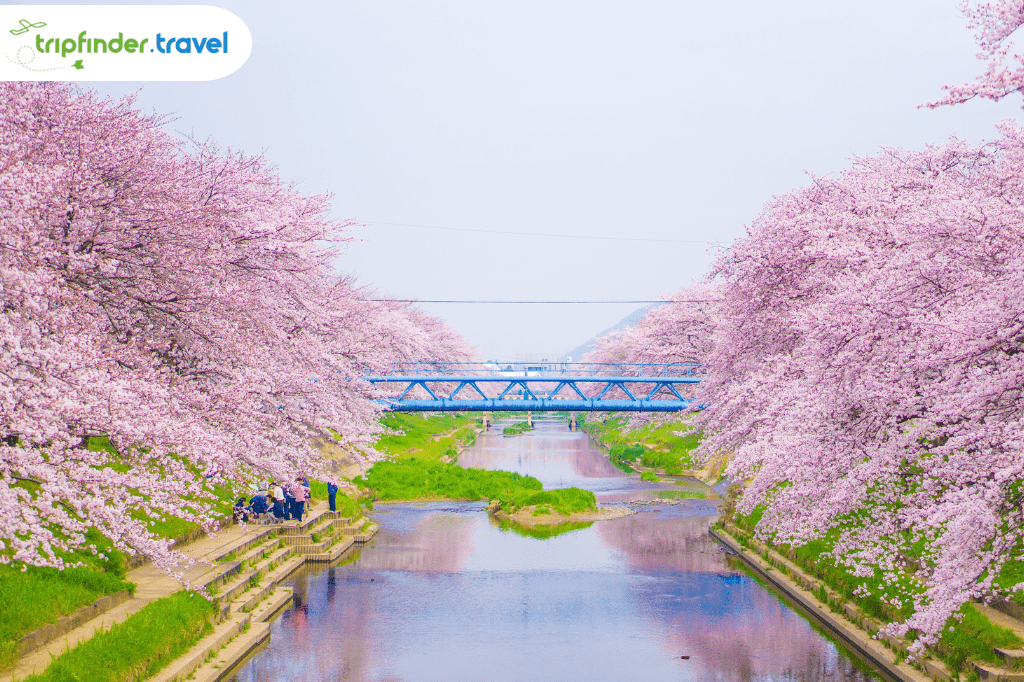11 Days Japan Vacation Package

- DAYS
11 - PRICE
د.إ 11,800.00







Take a memorable 11-day trip in Japan, the Land of the Rising Sun, with Tripfinder. This comprehensive tour skillfully combines traditional practices with contemporary advances to capture the spirit of Japan’s history and present. Your journey starts in Tokyo, a city of towering skyscrapers and ancient temples that provide the perfect backdrop for an enthralling excursion.
Your senses will be heightened as you explore Tokyo’s famous sights. You’ll go to the revered Asakusa Sensoji Temple, wander through Nakamise Shopping Street, and climb the Tokyo Skytree to magnificent heights. A visit to the Imperial Palace and a look at the National Diet Building provide insights into the politics and history of Japan. Tokyo’s dynamic fusion of history and innovation will be on full display as you pass by the opulent Ginza neighbourhood and take in the Rainbow Bridge in Odaiba. You will depart from Tokyo and go to the majestic Mt. Fuji, where you will experience the calm serenity of Oshino Hakkai and take in the panoramic views from the Mt. Fuji Panoramic Ropeway. A leisurely day awaits you once more in Tokyo, where you are free to explore the city at your own speed while revisiting old favourites or finding brand-new gems tucked away in the busy streets.
The journey then takes you to Hiroshima, a city with a sombre past and an exciting future. Discover the renowned Hiroshima Peace Park, Museum, and Atomic Bomb Dome while paying homage to the human spirit’s tenacity. An idyllic getaway is provided by a trip to Miyajima Island and its Itsukushima Shrine, which is supplemented by interactions with the island’s amiable deer. The serene Arashiyama Bamboo Grove and the opulent Kinkaku-ji Golden Pavilion are just a couple of the attractions in Osaka that have their own special appeal.
The trip to Nara, the former capital, where you will visit Todai-ji Temple, Nara Deer Park, and other attractions, serves as the pinnacle of your Japanese tour. If you visit Osaka again, you may tour the ancient Osaka Castle and the cutting-edge Umeda Sky Building, providing a variety of experiences inside this dynamic city.
Tripfinder’s 11-day tour offers an unforgettable journey through the heart of Japan, leaving you with enduring memories of a place where tradition and innovation coexist in perfect harmony. It combines cultural immersion, natural wonders, and technological marvels.
PRICE INCLUDES
Flight Tickets
Checked in Baggage
Airport Transfers
Accommodation 5*
4N Stay at Tokyo Hotel, Hilton Odaiba, or Similar
Bed & Breakfast
2N Hiroshima Sheraton Grand Hiroshima or Similar
Bed & Breakfast
4N Stay at Osaka Sheraton Grand Hiroshima or Similar
Bed & Breakfast
Tokyo City Tour
Mt. Fuji Tour
Hiroshima City Tour
Kyoto City Tour
Osaka and Nara Tour
Shinkansen Bullet Train Ticket: Tokyo, Hiroshima, and Osaka (Ordinary Class, Reserved)
Seat)
Tours and transfers on a private basis, as mentioned in the itinerary
Services of Driver
Travel Insurance
| Departure Date | Adult | Single | Child (6 - 11yr) | Child (2 - 5yr) | Infant | Seats | Book |
|---|---|---|---|---|---|---|---|
| 15 DEC 2023 |
| Departure Date | 15 DEC 2023 |
| Adult | |
| Single | |
| Child (6 - 11yr) | |
| Child (2 - 5yr) | |
| Infant | |
| Seats | |
| Book |
Our driver will meet the clients at the airport. Check-in to the hotel (standard check-in time: 15:00) Enjoy your free time in Tokyo.
Breakfast at the hotel; pick-up from the hotel;
Visit Asakusa Sensoji Temple.
Sensoji Temple, also known as Asakusa Kannon Temple, is a popular Buddhist temple in Asakusa, Tokyo. It was built in 645 for the goddess Kannon after two brothers accidentally tangled a statue of her in the Sumida River. Visitors enter through the Kaminarimon gate, symbolising Asakusa and the city. The temple’s main hall and five-story pagoda, built in 1649 by Tokugawa Iemitsu, are located beyond the Hozomon Gate. The temple hosts various events, including the annual Sanja Matsuri festival, Asakusa Samba Carnival, and Hagoita-ichi market.
Explore Nakamise Shopping Street.
Nakamise, a 250-metre shopping street in Asakusa, is a traditional shopping street on temple grounds. It runs on the main approach to Sensoji Temple and features shops selling souvenirs, snacks, and sweets. The street starts and ends with temple gates, with 89 shops between them. Nakamise is one of the oldest and most famous shopping streets in Japan, as it is one of the oldest and most famous.
Discover Tokyo Skytree (Floor 350).
The Tokyo Skytree is a tall, 634-metre-tall television broadcasting tower located in Sumida City Ward, Tokyo. It was the tallest structure in Japan and the second-tallest in the world at the time of its completion. The tower’s highlight is its two observation decks, the Tembo Deck and Tembo Galleria. The Tembo Deck, 350 metres high, spans three levels with panoramic views of Tokyo. The Galleria, 450 metres high, is dubbed “the world’s highest skywalk” and features a sloping spiral ramp. The highest observation deck, 451.2 metres high, offers lounging areas and tall windows. Visitors can purchase tickets for the first and second observation decks on the 4th, 5th, and 4th floors.
Lunch in your own Imperial Palace (photostop)
The Imperial Palace serves as both the physical and metaphorical hub of Tokyo and Japan. The Imperial Palace’s beautiful moats, bridges, and walls may be seen from the outside as you stroll along the path (this is also Tokyo’s most well-liked running route). You can also visit the Imperial Palace East Garden, which is a great place to get away from the city’s traffic and concrete. Additionally, if you’re interested in the history of World War II, you shouldn’t miss the contentious Yasukuni-jinja Shrine, which houses the graves of numerous Class A war criminals, and the nearby Yushukan Museum, which displays the nationalist interpretation of Japanese history during the war.
National Diet Building (drive-by)
The National Diet Building in Tokyo, a landmark of the Diet, is a must-see attraction. Built over 17 years, it stands 65.5 metres tall and features a pyramid-shaped tower and bronze statues of Japan’s founders. Visitors can explore the House of Representatives and House of Councillors, with free guided tours available for those interested.
Ginza(drive-by)
The Ginza is Tokyo’s renowned shopping, dining, and entertainment district, boasting numerous department stores, boutiques, art galleries, restaurants, nightclubs, and cafes. With one square metre of land worth over ten million yen, it’s one of the most expensive real estate projects in Japan. The district was once a silver coin mint and evolved into an upmarket shopping district after the 1923 Great Kanto Earthquake.
Rainbow Bridge in Odaiba
The Rainbow Bridge, a 798-metre suspension bridge connecting Odaiba to central Tokyo, is a popular tourist attraction. Originally built in 1993, it stands 52.4 metres above sea level and is supported by two towers. The bridge carries various transportation lines, including road traffic and the Yurikamome Line. It offers panoramic views of Odaiba’s waterfront and is a major attraction for tourists. Odaiba, a futuristic high-tech entertainment hub, was built to protect Tokyo from marine attacks during the Edo Period.
Drop-off at the hotel and the overnight stay at the hotel in Tokyo
Breakfast at the hotel
Pick-up from the hotel to Oshino Hakkai (Springs of Mt. Fuji)
Oshino Hakkai is a popular tourist spot in Yamanashi prefecture, featuring eight spring water ponds filled with snow from Mount Fuji. The water is considered sacred and has been filtered through lava for over 80 years. Visitors can enjoy traditional Japanese architecture, thatched roof houses, and beautiful gardens with a stunning view of Mt. Fuji. The site is also a popular spot for cherry blossom viewing, with the best viewing time occurring from early to mid-April.
Lunch on your own.
Visit Mt. Fuji Lake and cruise the Mt.Fuji Panoramic Ropeway.
The Mount Fuji Panoramic Ropeway ascends 400 metres from Lake Kawaguchiko’s eastern shore to an observation deck near Mount Tenjo’s peak, offering panoramic views of the lake and Mount Fuji. Visitors can also take a 30-minute hiking trail from the observation deck, which leads to a shrine at Mount Tenjo’s summit, and continue on to Mount Mitsutoge, a popular day hike with excellent views of Mount Fuji.
Depart for Tokyo. Drop-off at the hotel and overnight stay in Tokyo
Breakfast at the hotel.
A free day for your own exploration of Tokyo’s streets.
Stay the night in Tokyo.
Breakfast at the hotel; check-out of the hotel
Head to the station on your own.
Shinkansen bullet train to Hiroshima
The Nozomi Shinkansen (bullet train) is the fastest bullet train from Tokyo to Hiroshima, taking 4 hours. Tickets can be purchased online and delivered to your hotel. If you have a Japan Rail Pass, you can use the Hikari Shinkansen from Tokyo to Shin-Osaka station and then the Sanyo Shinkansen to continue to Hiroshima, which is slightly slower.
Reach Hiroshima Station.
Head to your hotel on your own.
Check-in at your hotel.
Enjoy your free time in Hiroshima.
Hiroshima is a popular destination for hiking, natural hot springs, and exploring quaint towns like Onomichi and Tomonoura. Its iconic Itsukushima on Miyajima is a World Cultural Heritage Site. The Atomic Bomb Dome and its memorial park are peace monuments. The city is also known for its okonomiyaki pancakes and saltwater eel. Outdoor activities include hiking, cycling, ocean sports, and skiing.
Overnight stay in Hiroshima
Breakfast at the hotel; pickup from the hotel
Visit Miyajima and Itsukushima Shrine.
Miyajima, a small island near Hiroshima, is famous for its giant torii gate, one of Japan’s three best views. Known as “shrine island,” it is closely related to Itsukushima Shrine. Miyajima is romantic and offers a peaceful atmosphere during the evenings. Visitors can also see wild deer that are accustomed to humans but must not be fed.
Itsukushima Shrine, located on Miyajima Island, is a centuries-old shrine known for its iconic “floating” torii gate. Built over water, it appears to float in the sea during high tide. The shrine consists of multiple buildings, including a prayer hall, main hall, and Noah theatre stage. Miyajima Island has a long history as a holy site of Shinto, with Mount Misen worshipped by locals since the 6th century. The shrine and torii gate are illuminated daily until 23:00, providing a picturesque backdrop for evening walks. Boat cruises are available for visitors to view the illuminated island.
Lunch on your own, explore Hiroshima Peace Park, Hiroshima Peace Museum, Atomic Bomb Dome, and Hiroshima Castle (photo stop),
Hiroshima’s Peace Memorial Park, over 120,000 square metres, is a prominent feature of the city, focusing on the events of August 6, 1945. The Peace Memorial Museum, a UNESCO World Heritage Site, surveys the history of Hiroshima and the nuclear bomb’s impact on human suffering. The A-Bomb Dome, a UNESCO World Heritage Site, remains a reminder of Hiroshima’s unique past. The Cenotaph for A-Bomb Victims is an arched tomb for those who died due to the bomb. A ceremony is held every year on the anniversary of the bomb, with speeches, wreaths, and a moment of silence observed.
The Hiroshima Peace Memorial Museum, established in 1955, is a popular tourist attraction in central Hiroshima, Japan, showcasing the atomic bombing of Hiroshima in World War II. With 53 million visitors, it features exhibits about the city before and after the bombings, as well as the current state of the nuclear age. Renovated in 1994, the museum is divided into two sections: the East Wing, which explains the city’s history before the bombing, and the West Wing, which focuses on the damage caused by the bomb.
The Atomic Bomb Dome, built in 1915, was registered as a World Cultural Heritage Site in December 1996. Designed by Czech architect Jan Letzl, it was a facility for exhibiting and selling Hiroshima Prefecture products and holding art exhibitions. The building, which was partially brickwork and partially stone and mortar, features a three-story staircase, a five-story staircase, and an oval copper plate dome. Despite being a rare wooden two-story building, it remains a famous place in Hiroshima.
Hiroshima Castle, also known as Carp Castle, is a five-story, plain-based castle in the centre of Hiroshima, Japan. Built in 1589 by feudal lord Mori Terumoto, it was a significant power centre in western Japan. Despite being destroyed by the atomic bomb in 1945, the castle was rebuilt in ferro-concrete with a partially wooden exterior. The castle houses an informative museum and panoramic views of the city. Recent restoration efforts include reconstructed Ninomaru structures.
Drop-off at the hotel and an overnight stay in Hiroshima
Breakfast at the hotel
Check-out of the hotel
Head to the station on your own.
Shinkansen bullet train to Osaka
Reach Osaka Station.
Head to your hotel on your own.
Check-in at your hotel
Enjoy free time in Osaka. Overnight Stay in Osaka
Breakfast at the hotel, pickup from the hotel
Visit Arashiyama Bamboo Grove and Kinkaku-ji Golden Pavilion.
The mystical bamboo path in Arashiyama offers a unique and photogenic experience for visitors. Starting from Tenryu-ji Temple and ending at Nonomiya Shrine, the 500-metre path is perfect for both pedestrians and bicyclists. The emerald bamboo grove attracts tourists and Kyoto’s best artisans, who handcraft souvenirs and everyday items from this versatile wood. There are bicycle rental shops and a rickshaw ride available for a more touristic experience.
Kinkakuji, a Zen temple in northern Kyoto, was once Ashikaga Yoshimitsu’s retirement villa. After his death in 1408, it was converted into a Rinzai sect temple. Inspired by the Silver Pavilion, the temple was built to echo Kitayama culture, with each floor representing different architectural styles. The first floor features Shinden-style architecture, the second floor Bukke-style with gold leaf exteriors, and the third floor Chinese Zen Hall-style with a golden phoenix.
Lunch on your own
Explore Fushimi Inari Taisha
Fushimi Inari Shrine is a significant Shinto shrine in southern Kyoto, known for its thousands of vermilion torii gates and trails leading to the sacred Mount Inari. The shrine is dedicated to Inari, the god of rice, and features numerous fox statues. The shrine’s main buildings, including the Romon Gate and main hall, are attractive and are donated by individuals and companies. The torii gate-covered hiking trail starts with two dense rows of gates, with donations ranging from 400,000 yen for smaller gates to over one million yen for large gates.
Drop-off at the hotel and overnight stay in Osaka
Breakfast at the hotel, pickup from the hotel
Depart for Nara.
Japan’s first permanent capital was established in 710 in Nara, now known as Heijo. The capital was moved to Nagaoka in 784 and later to Kyoto due to the influence of Buddhist monasteries. Nara, located near Kyoto and Osaka, is known for its cultural treasures, including some of Japan’s oldest and largest temples, and is less than an hour away from these cities.
Visit Todai-ji Temple and Nara Deer Park.
Todaiji, a famous and historically significant temple in Japan, was built in 752 as the head temple of all provincial Buddhist temples. Its main hall, the Daibutsuden (Big Buddha Hall), holds the record as the world’s largest wooden building. The hall houses one of Japan’s largest bronze Buddha statues, Vairocana, and is flanked by two Bodhisattvas. The temple also features a pillar with a hole in its base, believed to grant enlightenment. The temple complex covers northern Nara Park, including smaller temple halls and sites of interest.
Nara Park, established in 1880, is one of central Nara’s main attractions, including Todaiji, Kasuga Taisha, Kofukuji, and the Nara National Museum. The park is also home to over 1,000 deer, considered messengers of gods and a natural treasure. Deer crackers are available for sale, and some have learned to bow to visitors. Though surprisingly tame, deer can be aggressive if they think visitors will feed them.
Depart for Osaka.
Lunch on your own
Explore Osaka Castle and the Umeda Sky Building.
Osaka Castle, built in 1583, was intended to be the centre of a new, unified Japan under Toyotomi rule. However, it was destroyed by Tokugawa troops in 1615 and rebuilt in the 1620s. The castle tower was destroyed in 1665, and it was rebuilt in 1931. The modern castle tower houses an informative museum and is surrounded by secondary citadels, gates, turrets, stone walls, and moats. The Osaka Castle Park covers two square kilometres and features green space, sports facilities, a multi-purpose arena, and a shrine dedicated to Toyotomi Hideyoshi.
The Umeda Sky Building, also known as the “New Umeda City,” is a 173-metre- tall high-rise building in the Kita district of Osaka. It consists of two towers connected by the 39th-floor “Floating Garden Observatory,” offering stunning city views. The basement features a restaurant floor replicating a town from the early Showa Period, while most other floors are occupied by offices.
Drop-off at the hotel; overnight stay in Osaka
Breakfast at the hotel.
A free day to explore the streets of Osaka on your own
Overnight stay in Osaka
Breakfast at the Hotel.
Check-out of the Hotel.
Our driver will meet at the hotel.
Drop-off at the Airport
Note: Rates are subject to availability at the time of confirmation. Passports and UAE Residence Visas must be valid for up to 6 months from the date of travel. Visa approvals are subject to the embassy’s description.